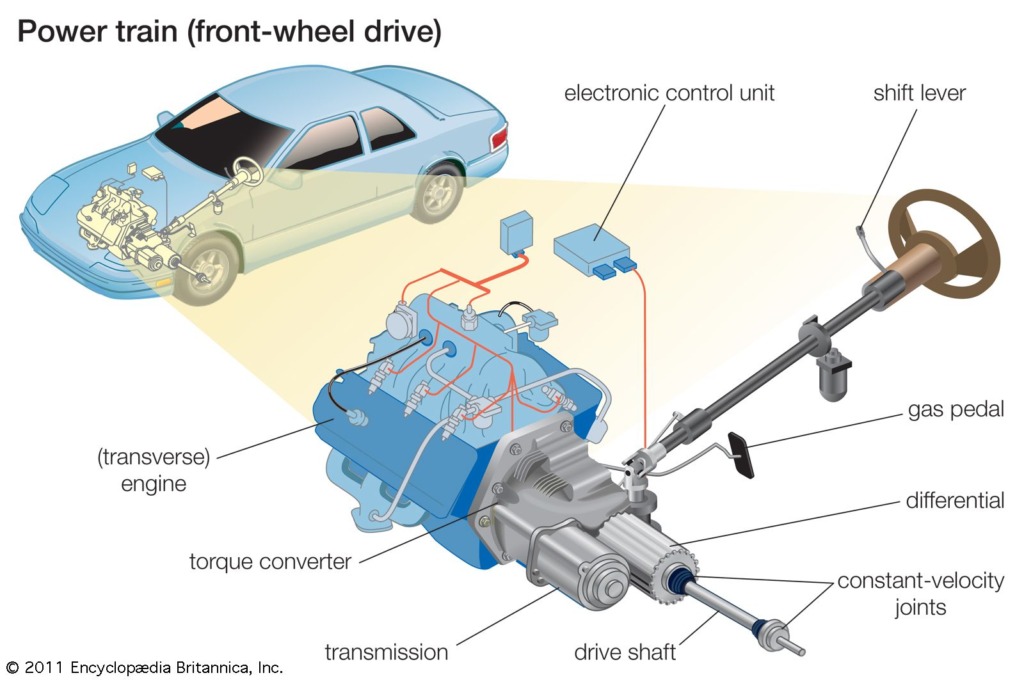I am currently working as a Postgraduate Researcher at the University of Leeds, where I am actively involved in research activities. Prior to this, I successfully completed my master's degree through the renowned Erasmus Mundus joint program, specializing in Tribology and Bachelor's degree in Mechanical Engineering from VTU in Belgaum, India. Further I handle the social media pages for Tribonet and I have my youtube channel Tribo Geek.
Tribology of Automobile Transmission
Table of Contents
Introduction
The tribological features of the transmission clutch and band play a vital role in governing transmission shift performance and the durability of the clutch and band components. In terms of tribology, an automatic transmission clutch comprises two essential components: the clutch plates with friction lining and the steel reaction plates. The clutch plate assembly is composed of three primary elements: a steel core, an adhesive coating, and the friction facings. In automatic transmissions, multiple plate clutches, band clutches, and torque converter clutches play a crucial role in transmitting torque or restraining a reaction member from rotating. The main function of these components is to serve as lubricated brakes, particularly for planetary gear elements, facilitating torque transmission between transmission elements and the torque converter pump (input) and turbine (output). Key performance criteria include dynamic and static band and clutch friction torque levels, influenced by transmission fluid characteristics. Shift-feel, chatter, static holding capacity, and friction interaction depend on the properties of the transmission fluid and its additives. Recommended fluids by vehicle manufacturers typically include friction-modifying additives to optimize transmission operation. Achieving smooth clutch engagement involves maintaining a low static friction coefficient followed by a high and stable dynamic friction coefficient. While friction modifier additives can enhance these characteristics, they may reduce clutch torque capacity under both dynamic and static conditions.
The performance and durability of transmissions hinge on vital factors such as clutch and band friction characteristics, transmission fluid viscosity, fluid oxidation, fluid shear stability, and wear properties of friction materials. Given the pivotal role of automatic transmission fluids in governing shift performance and long-term durability, detailed specifications for these fluids are emphasized in the automotive lubricants section, highlighting their critical importance in maintaining optimal transmission function.
Traction Drive
The effectiveness of a traction drive is heavily reliant on the choice of lubricant. A high traction coefficient is crucial, especially under elevated contact temperatures that can exceed 140°C in a typical traction drive. In addition to maintaining traction at high temperatures, traction fluids must withstand repeated shear and oxidation conditions without deteriorating. Research indicates that naphthenic base compounds and certain synthetic fluids exhibit superior traction characteristics compared to paraffinic or aromatic compounds. Naphthenic compounds are found to offer a higher rotational barrier and stronger molecular stiffness. Various factors, such as rolling speeds, lubricant temperature range, roller surface finish quality, Hertzian contact pressure, degree of spinning, and the geometry of rolling bodies, influence traction properties. Significant attention in continuously variable transmission (CVT) research is directed towards formulating and evaluating traction fluids to meet system performance requirements. Future research aims to optimize overall system performance through improved traction fluid formulations and their application across a broader range of automotive uses.
Wheel Bearings
Wheel hubs commonly utilize traditional rolling element bearings, typically made of hardened high carbon steel. These standard components undergo meticulous machining and grinding to achieve high tolerance and surface finish. Generally, deep groove bearings or a back-to-back angular contact bearing assembly are employed. During assembly, these bearings are packed with grease and sealed with elastomeric lip seals. The primary cause of wheel bearing failure is often damage to the surface, typically occurring during incorrect fitting or after an impact during operation, such as the wheel striking a curb. This surface damage can serve as an initiation site for the propagation of rolling contact fatigue failure.
Drive chains
Certain car engines utilize chain drives for timing and ancillary components due to their advantages like high capacity, increased durability, and cost-effectiveness. The chain drive components include the chain, sprockets, chain guides, and tensioners. Two main chain types are roller chains with link plates, pins, bushes, and rollers, and silent chains with shaped link plates and pivot pins. Lubrication is achieved through splash and jets onto the sprocket/chain entry. In roller chains, the pin slides inside the bush during articulation, causing wear, while silent chains experience wear on the link plate surface. Dynamic loading on the chain drive is alleviated by polymer chain guides and tensioners, often Nylon 66. These components may experience wear due to chain tension and impact forces, and fuel-related softening in tensioners. Wear patterns, known as ‘tramlines,’ may form on guide faces, potentially mitigating wear when deep grooves develop.
Reference
[2] https://www.britannica.com/technology/automobile/Transmission


Be the first to comment